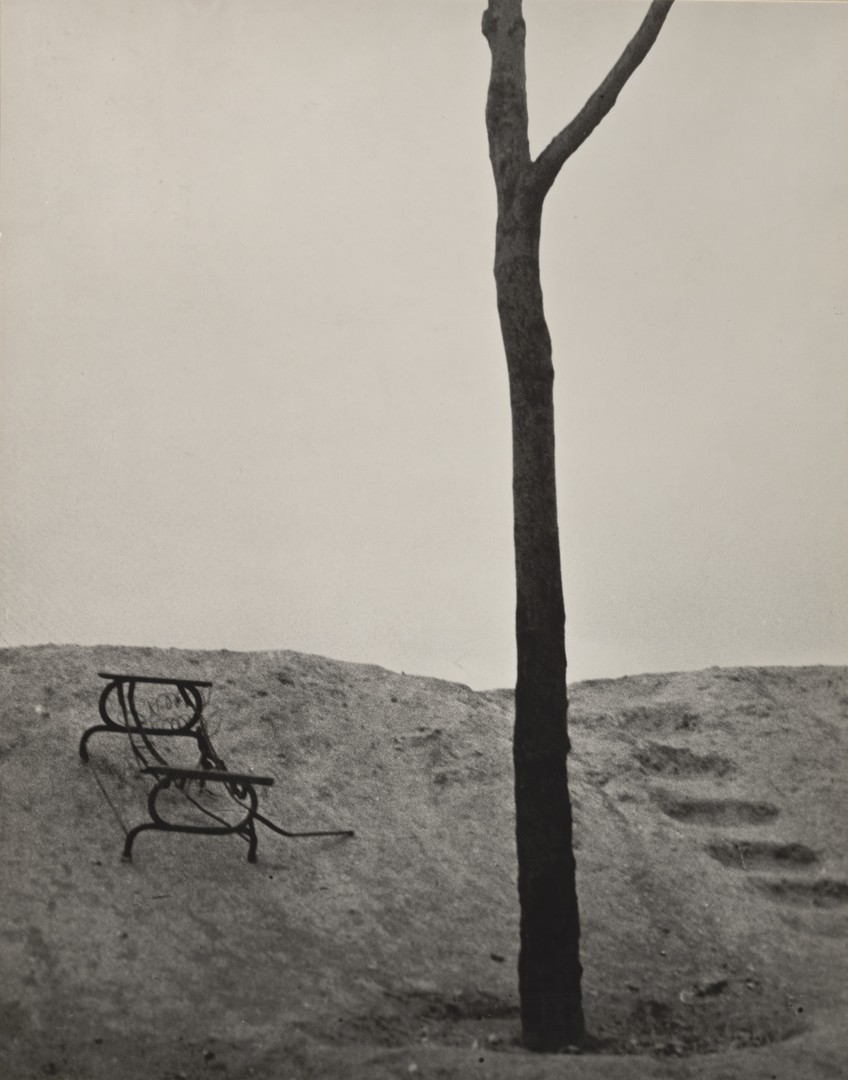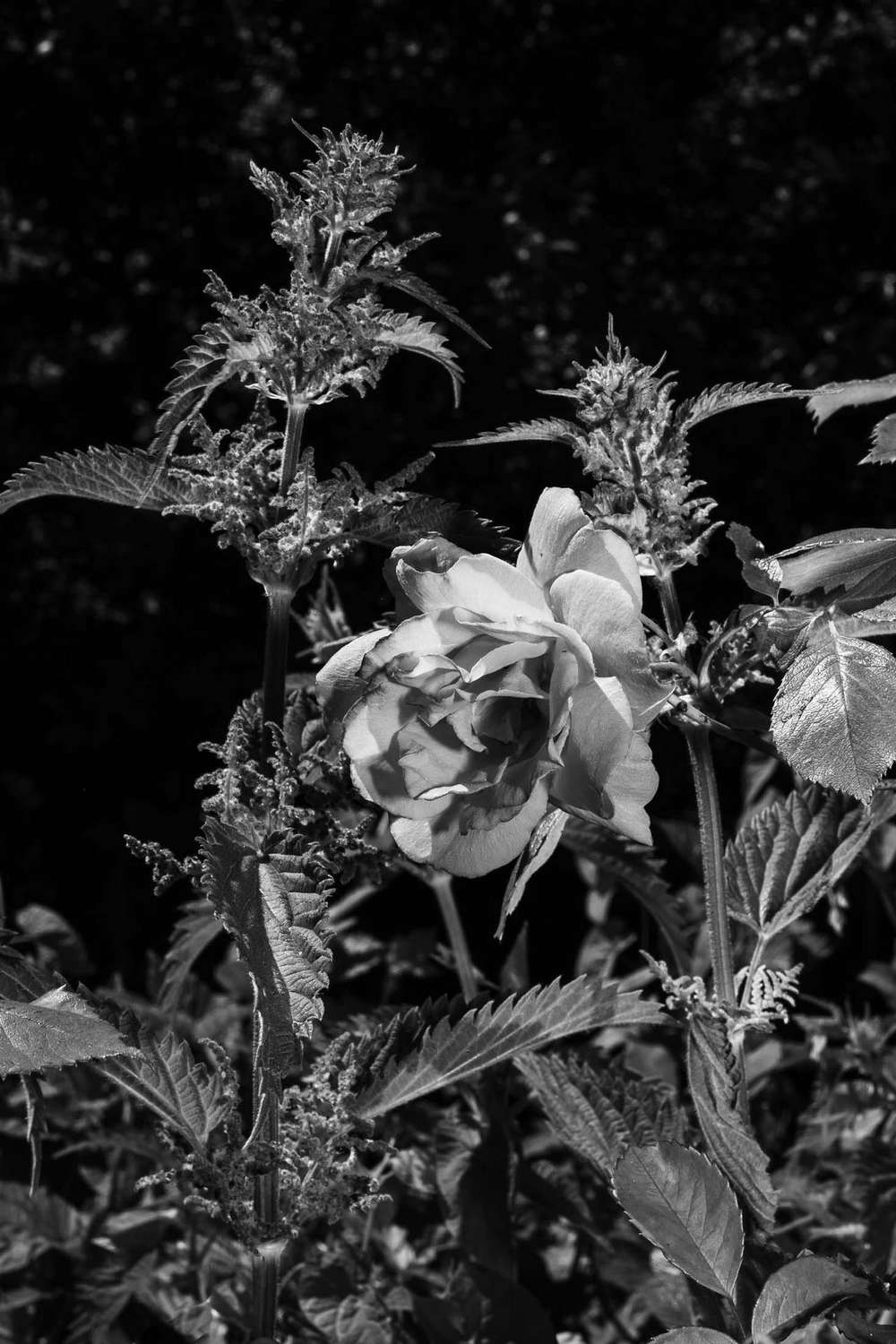
📝 The following is a mini essay / artist statement for Snag / Inflorescence - a project conducted during my masters in photography.
This project is about borders. Specifically, marginal urban spaces which are informal and unmapped sites of transition.
Marginal space denotes a territory which exists on an edge or margin of an interface. Often the consequence of abandonment as well as the by-product of urban development and the intermittent economic tide on which it is determined by, these unproductive spaces are situated between others. Due to their segregated interstice nature, they are territories which fall outside of the conventional urban circuit.
Disconnection from the productive urban interface induces negative connotations which emphasize wastefulness such as “wasteland” or “derelict land”. Additionally, numerous anthropological terms can be used to describe and interpret marginal spaces, sometimes categorizing them as concrete places between urban and rural interfaces. The etymological processes and historic scrutinization across different disciplines demonstrate the fluidity of the space and its countless interpretations.
The work avoids subscribing to any one definition or spatial connotation. Instead, it focuses on ambivalence and inexactness. Our reading of landscape is informed by a cultural construction of urban and rural, and furthermore civilization and nature. I am interested in the uncertain responses when these constructs fail us. Within photography, this is a long-established method and approach to marginal spaces.
Parisian Eugène Atget captured a ‘zone’ of empty and neglected spaces encompassing Paris in a work titled Zoniers in 1913 (Carville, 2018, p. 255). Following Atget, surrealist, Man Ray, made photographs of a vacant lot in Paris, titled Terrain Vague, which would later inspire the modern term of the same name.
Man Ray’s, Terrain Vague, as seen in Fig 1, is an influential image to the project. Though taken in 1932, it features no obvious landmarks or discerning features resulting in a timeless appearance that could be geographically anywhere. Discarded ironwork remains lay on a footprint covered embankment while a featureless tree cuts through the foreground. The scene is uncertain and apprehensive.

Andrei Tarkovsky’s 1979 film, Stalker, is a conceptual influence. It uses the concept of marginal space, its uncertainty and unease, as a science fiction narrative plot device known as the Zone. Alex Garland’s homage, the 2018 film, Annihilation, draws from similar narratives and devices by using marginal space as fluid and dreamlike landscape. Both works are examples of using indeterminate space for storytelling.
With these influences, I began to explore and search for my own Zone. A historic road turned field border provided discourse on successional nature reclaiming human spaces and our interaction with them. Conifer plantations, long narrow strips of woodland that are often seen on the edges of golf courses and agricultural fields on the fringes of urban encroachment, presented a human vision of nature in uniformed repetitious spacings. Post-industrial wasteland demonstrated the banality of urban space and its economic ties. Within these spaces, the photographic act, through framing and composition, conveyed a myriad of pre-defined interpretations.
Photographic representations of marginal space can, through aesthetics and mediated focus, align with already established interpretations. This is a trap which fails to engage with the space and enforces modish spatial connotations resulting in stale urban imagery.
Following Tarkovsky’s conceptual influence -the use of marginal spaces as a source of functional indeterminacy and unique interpretations, I sought a unique photographic representation of marginal space. I chose a site that I am knowledgeable of and have an autobiographical connection with. The site is a neglected allotment plot. Situated out of the way in an overlooked corner of dense bramble, roses and dilapidated greenhouses, I have personal ties to this space. My grandparents took it over in the late ’1950s when they moved into the red brick terrace of three overlooking the plot. It is not a conventional allotment plot, more an extension of the house and a part of the family landscape.
The site has been the subject of constant landscaping through the working of the land for more than fifty years by the same group of people. Their history through their actions is in the land itself. Anthropologist, Tim Ingold, refers to this as a woven texture which is incorporated into plants and animals:
Human beings do not, in their movements, inscribe their life histories upon the surface of nature as do writers upon the page; rather, these histories are woven, along with the life-cycles of plants and animals, into the texture of the surface itself (Ingold, 2000, p. 198).
This weaving of history is evident through the site's rose bushes. My grandfather prolifically hybridized his favourite rose varieties. Planted in borders, they once lined patches of vegetables and grass pathways. With neglect, they are now scattered like islands, thick with bramble climbing their stems and nettles crowding between.
The roses can be interpreted as living ruins. Historic pruning, in the form of weathered snags and amputated stems, is evidence of a custodian applying shape and form to the plants. With neglect, these plants have now outgrown their intended forms with uncontrolled sporadic growth.

The notion of uncontrolled nature is furthered by the presence of self-seeding and opportunistic plants commonly known as weeds. These are left unchecked to fulfil their biological processes, living alongside the cultivated plants which are more suited to the romantic notions of the English rose garden. Together, the two create ambivalence and uncertainty as seen in fig 2. Is it a garden or a post-garden space turned feral? The question raises the marginal status of the space. Rather than answering the question, the project plays with the inquiry as a border between the two states.
In its intended form, the photobook, the sequenced images invite the viewer to question the space: its past through its evident horticultural legacy and its future as post-garden feral abandonment takes hold. The work is subjective with both sides of the narrative presented within the border construct, leaving the viewer to question the ambivalent scenes against their own spatial presumptions. Furthermore, by not adopting a relevant spatial connotation such as “urban wildscape” or “derelict land”, the work uses the inexact and transitional characteristic of marginal space as a narrative device, allowing the space to be open to interpretation. This conceptual play of imprecise spatial connotation and acknowledgement that humans live through the landscapes they inhabit, demonstrates a unique nature culture relationship: a transitional border between the garden and a new wilder space where the existing cultivated nature grows uncontrolled alongside opportunistic self-seeding nature.
Carville, J. (2018) ‘The Narrow Margins: Photography and the Terrain Vague’, Imagining Irish Suburbia in Literature and Culture, pp. 249–273. doi: 10.1007/978-3-319-96427-0_13.
Ingold, T. (2000) The Perception of the Environment: Essays on Livelihood, Dwelling and Skill. Psychology Press.
Ginn, F., (2017) Domestic Wild: Memory, Nature and Gardening in Suburbia. London and New York: Routledge. ISBN: 9781409452485.
Haila, Y. (2000) ‘Beyond the Nature-Culture Dualism’, Biology & Philosophy, pp. 155–175. doi: 10.1023/a:1006625830102.
Ingold, T. (2000) The Perception of the Environment: Essays on Livelihood, Dwelling and Skill. Psychology Press.
Jorgensen, A. and Tylecote, M. (2007) ‘Ambivalent landscapes—wilderness in the urban interstices’, Landscape Research, 32(4), pp. 443–462
Jorgensen, A. and Keenan, R. (2012), Urban Wildscapes. Routledge.
Mariani, M. and Barron, P. (2014) Terrain Vague: Interstices at the Edge of the Pale. Routledge.
Wells, L. (2011) Land Matters: Landscape Photography, Culture and Identity. .B.Tauris.